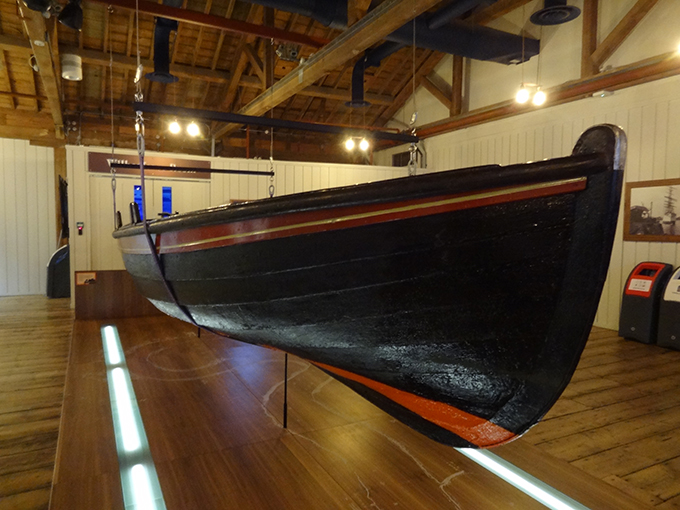Museum of London Docklands
I’ve only recently learnt about the Museum of London Docklands, so decided I needed to investigate it.
A short walk from West India Quay DLR station, the museum is easy to see from the train and easy to find. Based in an old warehouse, the museum is situated on the waterfront.

Starting the Tour of the Museum of London Docklands
The Museum of London Docklands is based over 3 main floors. The cafe and shop are on the ground floor, so you start your museum tour on the 3rd floor. Working out how to use the lift was the first task. The buttons are on a pillar not next to the doors.
As the Museum is housed in a warehouse, there is a lot of space so it is easy to move around, which is great for wheelchair users. The first area covers the history of the area as a docks area, the housing and transportation of goods.

The displays explore the equipment that the dock workers would have used to move, test and weigh the goods. Photos and film add more detail, giving a more in depth experience.

What I did find odd, was the colour of the information boards. Some were bright red, some were blue and some were gold. I’m not sure if there was a specific reason for this (ie blue for one type of product). I found the red particularly difficult to read and my eyesight is good. I would think someone with eyesight problems, especially those that are colour blind, might find it even harder.

Shipbuilding
Ship building is covered, as well as how some of the packaging was made, a fantastic array of tools. In the area called Sailortown (a reconstructed London street) there was even a reconstructed forge.

The Slave trade
A huge part of London’s wealth over several centuries, was based on slavery. At one point is the biggest player in the slave trade. Ships left the port carrying goods bound for Africa. Slaves were then acquired and transported on their thousands across the Atlantic to the plantations in the Caribean. Sugar and other goods were then transported back to London.
This inhumane practise is explored in great detail. Experiences of the slaves themselves, those that escaped and became free and those that fought to stop the appalling trade. It’s not commonly known, but that many women were critical to the success of the campaign, as well as campaigners such as Wilberforce, despite them not having the vote themselves.

Africans have lived in London and the UK for centuries as a result of the slave trade. People such as Dido Elizabeth Belle. Dido was the daughter of a naval officer and an enslaved African woman. She was raised by her uncle the Earl of Mansfield, but was never really treated as an equal by her family. There is an interesting TV programme that looks at how the dress she wears in this painting was made. It can be watched here.
The Blitz
Another important facet of London covered in the museum is the Blitz and how it affected the east side of London. Docklands was central to both the London and national economy. If the docks were disabled you would be able to seriously reduce the city’s capacity for war production.
Lots of international trade passed through the docks. Damage this trade and you would significantly reduce the Captial’s economy and supply chains. As well as the docks area there were areas that were important to the industrial and storage industries. Areas such as the gas works at Becton were targeted.

It was also felt that constant bombardment would sap public morale and reduce the spirits of the civilian population. However this proved not to be the case. The photo above is a bomb shelter for people manning ack ack guns.
Modern day
The last section in the Museum of London Docklands covers the growth and development of the Docklands area since the war, including the tube extension and the DLR.
From an interpretation angle, I would suggest the museum could improve it’s accessibility for the deaf community by adding subtitles to the videos. One video dramatised customers in a Georgian coffee house and their interactions. It was very hard to hear all the conversations due to background noise.
